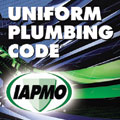
By all accounts, the IAPMO Uniform Plumbing Code has made tremendous strides during the past few code-change cycles. The code has become easier to understand and much more user friendly. Many more engineered designs are included.
But as so often happens in the code business, there is a backlash when the “old school” mentality rears its ugly head. Some of that occurred at the recent Plumbing Technical Committee meeting in St. Louis. This second meeting of the committee was to review comments submitted to actions taken by the committee at last year’s gathering. This is the meeting where the vocal minority gets its say.
One of the earliest series of changes discussed was on air-admittance valves. A manufacturer submitted a number of changes. There also was a change to the appendix on engineered design, proposed by ASPE. The committee originally voted to approve these changes. During the written ballot, the changes received a majority vote, but not the required two-thirds vote.
The public comment regarding air-admittance valve changes consisted of one line. “There are no guarantees that an air-admittance valve will provide adequate airflow throughout the DWV system,” the comment read.
Clearly, the proponent of the public comment chose not to read the volumes of documentation submitted on air-admittance valves. At times, it is easier to stick your head in the sand rather than garner any level of intelligence on a subject matter.
One committee member commented that it is time to enter the 21st century; air-admittance valves are here and they are here to stay. As often pointed out, the majority of jurisdictions adopting the UPC allow air-admittance valves, including the city of Los Angeles.
The committee did vote to accept the one line public comment. The net result is the changes on air-admittance valves were rejected. Unless some miracle occurs - which is doubtful - air-admittance valves will not appear in the 2012 UPC.
More Changes Rejected
Some of the other changes that infuriated the vocal minority were changes that added specific reference to the appropriate standard. A committee working with IAPMO staff did an outstanding job listing the appropriate standards for various sections throughout the UPC. I happen to think these changes are excellent.The argument against the inclusion of specific standards was nonsensical. The comments had the general tone of, “We have lived this long without standards referenced in the body of the code, why should we change?” One person actually said no one pays attention to standards when enforcing the code, so why add them into specific code sections? The implication was referencing the standards was unimportant.
As crazy as all this sounds, there were a number of changes that did not receive the two-thirds written vote to reference the standards. This leaves the changes without a firm recommendation from the technical committee. The hope is the full membership will understand the importance of referencing the code changes and will vote to approve the changes at the annual meeting in September.
Low-Flow Fixtures
Many, including myself, thought the technical committee would take a bold step by mandating lower flow fixtures than are currently in the federal guidelines. Various changes by the green committee would have required a maximum of 1.28 gallons per flush for the majority of water closets. Certain water closets, however, would still be permitted to flush 1.6 gallons. Similarly, there were changes to lower the flush volume to 0.5 gallons per urinal. The remaining water conservation changes were to lower water usage on lavatory faucets, kitchen faucets, dipper wells and commercial kitchen sprayers.Since the UPC is used in many parts of the country with limited water supplies, these changes seemed appropriate. When discussed during last year’s meeting, the changes were rejected because they violated federal requirements. With the removal of the pre-emption by the federal government, the changes became viable. This also would have given the UPC a leg up on every other plumbing code by having better water conservation requirements in its 2012 code.
Unfortunately, the committee voted to reject the code changes. The sentiment was further water conservation should be voluntary.
Siphonic Roof Drainage
The change to add siphonic roof drains to the UPC received positive input at the TC meeting. The vocal minority has opposed siphonic roof drainage for various ridiculous reasons. The public comment submitted this year mentioned the ASPE standard is not an ANSI standard, which is true. What also is true is an ANSI imprimatur is not required by IAPMO. Furthermore, another ASPE standard on rainwater collection systems was added to the UPC. That standard also doesn’t have an ANSI imprimatur. The same person submitting the public comment against the ASPE siphonic roof drainage standard voted to accept the ASPE rainwater collection standard.Although siphonic roof drainage was approved at the meeting, it failed to obtain the two-thirds majority on written ballots. The result is there is no recommendation by the technical committee. Once again, the vocal minority wins on a procedural issue.
Not all was lost at the meeting. The technical committee accepted many good changes. There was a complete rewrite to the joints and connections section. This will greatly improve the UPC.
With minor editorial changes, the committee accepted the complete rewrite of the nonpotable water reuse chapter. The changes to this chapter alone advance the UPC to the next level. The new chapter will be a footprint that every other plumbing code can follow. It is that good!
It is unfortunate the “old school” mentality ruled the day at the meeting. The technical committee cannot be proud of the outcome. The vocal minority did not do the UPC justice with their actions. We may be stuck waiting until the next code cycle.



